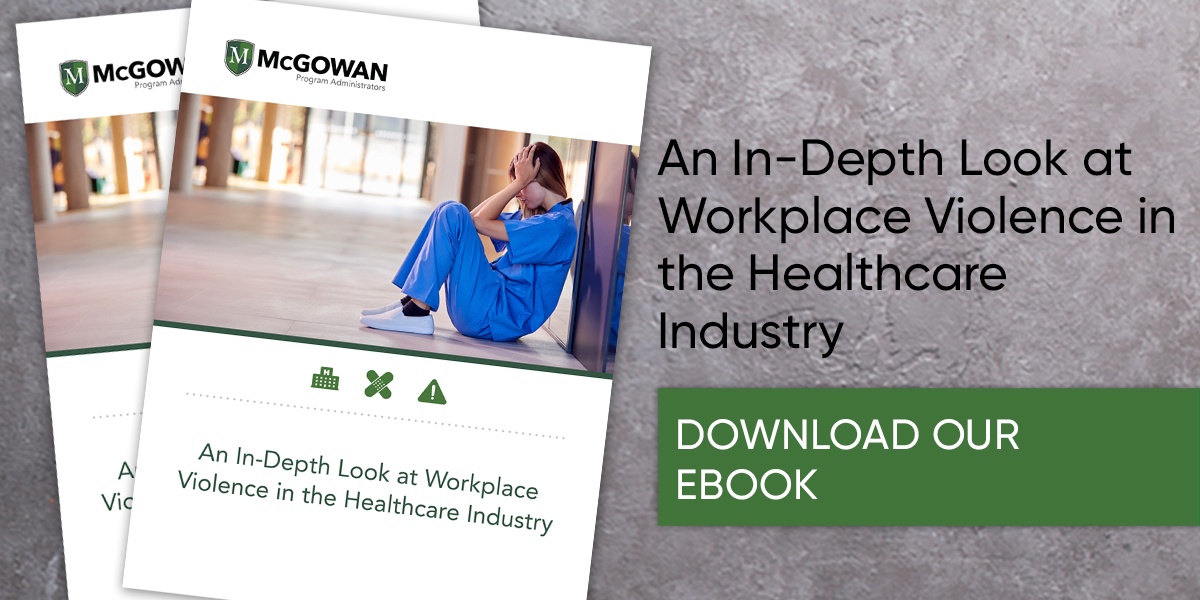70% of emergency nurses have been assaulted on the job. It’s a distressing statistic, but emergency department violence has only increased in the past five years, with healthcare workers making up 50% of victims of such crimes.
Now is the time for hospitals to recognize how workplace violence has affected their nurses. It’s critical that they investigate why there has been a rise in violence against their staff, review their policies, and ensure they are using all the tools available to protect themselves.

What’s caused the increase in violence against nurses?
While there are many reasons for rising violence, such as understaffed emergency departments (EDs) and mental health challenges, the pandemic has been another factor contributing to patient frustration.
COVID-19 caused a new wave of patients to flood emergency departments. At the same time, the political climate around vaccines also intensified, emerging as the leading cause of increased violence against nurses.
The world is moving on from the pandemic, but vaccine debates have continued well into 2023. Factoring in that total ED visits have long been climbing (growing from 94.7 million in 1995 to 142.6 million in 2016), workplace violence will continue to affect nurses.
Also read: How to Prepare for Civil Unrest and Political Violence
How does workplace violence affect nurses?
A recent survey indicated that 73% of healthcare workers had experienced violence in the past year.
This violence can and does take a real toll on nurses, contributing to critical healthcare staff feeling a decrease in job satisfaction and a reduction in work motivation. When asked, 25% of healthcare staff claimed they’d be willing to leave their roles over the situation.
There are also more subtle consequences as teams struggle to come together and experience a loss of trust in upper management—low morale, absenteeism, trouble at home, and turnover. More intense effects, such as debilitating psychological trauma or even death, will also impact the entire hospital and its staff.
Where is the support?
Just 69% of physical violence and 71% of non-physical assaults are reported to managers. Verbal assault, such as bullying, is especially underreported—even though it can be as detrimental and long-lasting as physical violence.
It’s common for healthcare workers to have an ‘it’s just part of the job’ mentality when it comes to workplace violence. Additionally, they may feel unsupported in reporting the violence due to a fear of retaliation, a lack of a reporting method, and a belief that nothing will be done anyway.
How are hospitals affected?
Workplace violence has a very real physical and psychological impact on its workers, but the hospital suffers, too. The cost of attacks on medical staff totals $53.7 million annually, as staff members are forced to be out of the hospital for 112.8 hours a year due to job-related violence.
In an industry already experiencing significant staffing shortages, additional stress on remaining staff and pressure to cover shifts will only negatively affect hospitals. Expected outcomes for staff include:
- Depression
- Burnouts
- Growing levels of job dissatisfaction
- Increasing turnover
The resulting productivity loss means hospitals must look at every available way to protect themselves.
Also read: Top 10 Things to Look for in an Active Assailant Policy
What can hospitals do?
Growing ED cases and resulting frustration will only continue, and nurses will continue to be put in high-stress situations. It’s up to hospitals to acknowledge how workplace violence affects nurses and help prepare them for these events by:
- Improving their ability to handle physical and verbal assault by mandating violence awareness and prevention training.
- Establishing a clear and consistent reporting process for workplace violence.
- Encouraging pressing charges in the case of assaults to help discourage future attacks.
- Facilitating nurses to come together as a team to support each other and seek solutions.
- Bolstering critical security solutions such as alarms, security personnel, and an emergency response system.
Hospitals can also utilize the guidance set by the American Association of Critical-Care Nurses (AACN), which has prepared a “Preventing Violence Against Healthcare Workers” position statement.
What about insurance?
Hospital workplace violence against nurses will continue, even if steps are taken to reduce it. Tensions in emergency departments will always be high, and life-threatening situations are catalysts for negative behavior.
To prepare for any eventuality, hospitals should invest in adequate insurance. The right coverage can assist hospitals in anything from property damage to medical expenses, helping them stay afloat and continue to serve their local communities.
McGowan Program Administrators is a leading provider of Workplace Violence Insurance products. We provide coverage for liability protection, medical and counseling death benefits, business income, and extra expenses due to acts of workplace violence.


